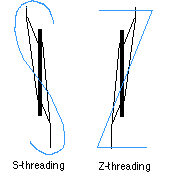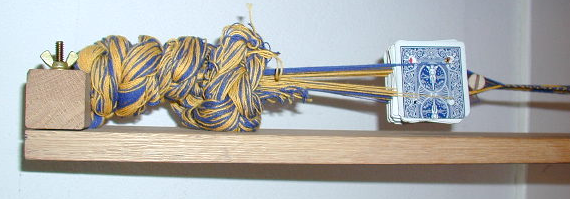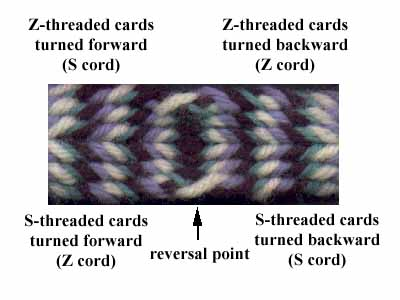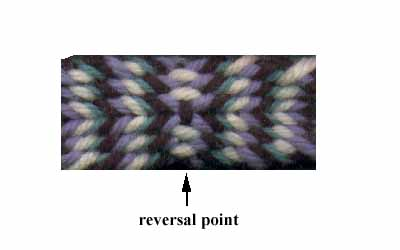Threading Tablets
Judging from the email I get, this is one of the hardest things to figure out from my web page. So I’ve added this page, with several more figures, to help explain.
First, for most patterns each tablet requires four warp threads, one through each hole. A threaded tablet looks like this:

If you, the weaver, are holding the end indicated, so that the front of the tablet in the picture is to your right, then this tablet would be S-threaded. If all four threads passed through the tablet from the back to the front, instead of front to back, the tablet would be Z-threaded.

Once you get all the tablets threaded, set them all next to each other in a pack, as in this photo:

Assuming the perspective shown in the top figure, for a forward turn the tablet would move clockwise, and a backward turn would be counterclockwise. It’s like a bicycle wheel - for the bike to move forward, the top of the wheel goes away from you.
An S-threaded tablet turned forward makes a Z-twisted cord. Reversing the turning reverses the cord twist, and reversing the threading also reverses the cord twist. The opposite twist appears on the back of the band. This is what makes jagged diagonal lines. The pictures below show the front and back of a sample band which includes all the possible threading and turning combinations.
Front

Back

